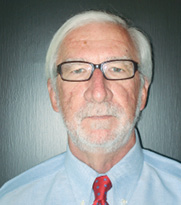A client of mine recently sent me a copy of the 2010 Cost of Doing Business Study compiled and published by the Southwestern Dealer Assn. This study has been around for years and provides an interesting look at how agricultural equipment dealers are faring by way of "industry wide" averages.
Dealers looking for comparative data will find much to like abut the 2010 industry results, not the least of which was a pre-tax profit of 3.7% for the average North American agricultural equipment dealer. By my calculation, however, dealers did even better when "Cash/Volume Discounts" are removed from "Dealership Sales" and are instead included in "Additions to Other Income," which is where most dealerships' chart of accounts place such a critical component. With this simple calculation, Net Profit Before Taxes, a.k.a. Return on Sales, increased to 3.76%, which is the highest number that I have seen for the past 35 years.
Higher ROS
This highest Return on Sales since the mid-70s validates my continuous refrain over the past two decades that equipment dealers should strive to achieve at least a 5% net profit margin, and preferably pursue a 10% Return on Sales. Now, as more and more dealers lurch inexplicably to the standard that I have been advocating, the question becomes, "Are these profit results a manifestation of improved managerial practices or a product of market exigencies?" If it's the former, then you should be congratulated; and if the latter, then you should immediately seek an exit strategy while "the getting is good."
Careful readers of this column, and my previous column, however, know that I am less impressed with dealership profitability and more concerned with dealership cash flow. And alas, the results of the 2010 CODB Study could portend a less sanguine future for dealership cash flow.
When analyzing a dealership's cash flow, it's important that a balance be struck between the dealership's wholgoods sales mix and the dealership's used equipment turnover. As wholegood sales increase, used equipment turnover must increase proportionately since much of a dealership's cash flow in the capital goods business is generally tied up in used equipment. As wholegood sales outpace parts and service sales, as measured by the sales mix percentages, used equipment must "turn" even faster to provide the necessary cash to meet fiduciary obligations.
Manufacturer Pressure?
Between 2008 and 2010, wholegood sales, as a percentage of total dealership sales (with "Cash/Volume Discounts" once again removed from Dealership Sales) increased from 73.37% to 74.96%. Much of this increase is undoubtedly a result of the manufacturers putting pressure on their dealers for increased market share.
Compounding this deleterious result is the fact that the used equipment turnover declined over the same 3-year period from 2.79 to 2.23. Thus, as dealers sell more and more new equipment in their zeal to satisfy market share demands, and in many cases, to receive their cherished volume bonus to prop up an otherwise tawdry profit and loss statement, their lots are becoming "stuffed" with overvalued used equipment that contains the cash necessary to meet such mundane items as payroll and floor-plan interest.
Used Wholegoods
Equally unsettling is the fact that dealers continue to post a higher gross margin on new wholegood sales than they do on used wholegood sales. Dealers who continue to post such numbers simply don't "get it." Smart dealers have long realized that the gross margin on used wholegood sales should be significantly higher than those posted on new wholegood sales. Yet, in 2010, new and used wholegood gross margins were 7.54% and 7.4%, respectively.
Lower gross margins on used wholegood sales than on new wholegood sales generally go hand-in-hand with a low used equipment turnover (see above) and with high sales compensation as measured by dividing the total sales salaries and commissions by the total new and used wholegoods gross margin dollars. Ideally, this number should approximate 25% and never exceed 35%. For 2010, the average dealer paid their salespersonnel 33.21% of each gross margin dollar generated, which is almost exactly the industry average that I have been compiling since 1982.
Sales Compensation
In reality, however, the sales compensation as a percent of gross margin dollars is most likely significantly understated since wholegood sales will include those sales consummated by the dealer principal and/or the general manager, but whose compensation will most likely appear in another category such as "Salaries Officers and Store Managers." Thus, when looking at sales compensation as a percent of wholegoods gross margin, one should either exclude the performance of the managerial personnel or include their compensation into the equation.
Whether the improvement in the dealership profit and loss statement is a function of managerial oversight or increased commodity prices is certainly a debatable question. What is not debatable, however, is that dealers interested in long-term success must improve their balance sheet performance. Hopefully, the 2011 results will illustrate a significant improvement in new and used wholegoods turnover.






